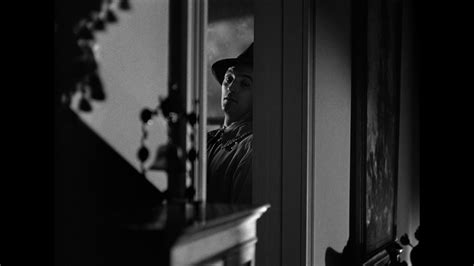Shadows and Screams: Film Noir and Horror.

By 1948 Hollywood had by and large turned its back on the vampires, werewolves and mad scientists that had held audiences in thrall throughout the war years. An age of sci-fi monsters and outer space menaces lay just around the corner but before that approach took hold there was a fascinating mini-cycle of films that combined elements of film noir with those traditionally associated with horror cinema. It is worth revisiting the films engendered by this trend as many are bona fide classics.
The most famous example of this is Nightmare Alley (1947) with its exploration of mentalists, magic and sideshow weirdness. Other films include The Strange Mr. Gregory (1945), a rather atmospheric offering from Monogram with Edmund Lowe in the title role, and the remake of M (1951) with David Wayne as the pathetic child murderer Peter Lorre made famous in Fritz Lang’s 1931 classic. Frank Wisbar’s Strangler of the Swamp (1946) was produced by PRC, a studio whose threadbare cheapness made Monogram look like MGM, exuded a certain noirish ambiance. And of course Val Lewton’s classic series of horror films for RKO were not a million miles from classic film noirs like Laura (1944) and Murder, My Sweet (1944)
Another of these is Night Has A Thousand Eyes (1948), released by Paramount and directed by John Farrow. It was based on a novel by Cornell Woolrich, who made occasional forays into horror but is best known for his dark, descriptive crime novels such as The Bride Wore Black and The Black Angel. Elements of Nightmare Alley reappear here but the tone is, if anything, even darker and more fatalistic.
The film unfolds the tale of John Triton (Edward G. Robinson), a mentalist with a successful stage show who begins to believe himself to have the power to foresee how, when and where a person will die. This knowledge has dire implications for everyone around Triton and the tormented psychic secludes himself away in a delving into occult lore in an attempt to explain his “gift”. He predicts the death of young heiress Jean (Gail Russell), telling her she will die on a certain date, outdoors under the stars (the “thousand eyes” of the title). Triton, Jean, the police and other interested parties gather at Jean’s mansion where Triton’s terrified certainty at his prediction collides with the suspicions of the police who’ve been digging into the seer’s past.
The film’s examination of skepticism vs. magic shares much in common with Nightmare Alley whilst Robinson’s torment in the face of forces he cannot possibly understand
recalls the actor’s equally excellent turn in Julien Duvivier’s Flesh and Fantasy (1943). The segment in question, based on a short story by Oscar Wilde, had Robinson as a materialistic lawyer who off-handedly has his palm read at a party, sensing that the old fakir knows more than he is telling. Robinson’s character finds his skepticism slipping as he descends into madness. Flesh and Fantasy might as well be considered a prequel to Night Has A Thousand Eyes, in fact.
These films and others like them in a way form a bridge from the classic horror cycle of the 1930s and 1940s and the revival of the genre in earnest in the later 1950s. The doomed ambiance and shadowy landscapes of film noir made it natural to marry it with horror, and doing so provided us with many legitimate classics that hold up to this day.

